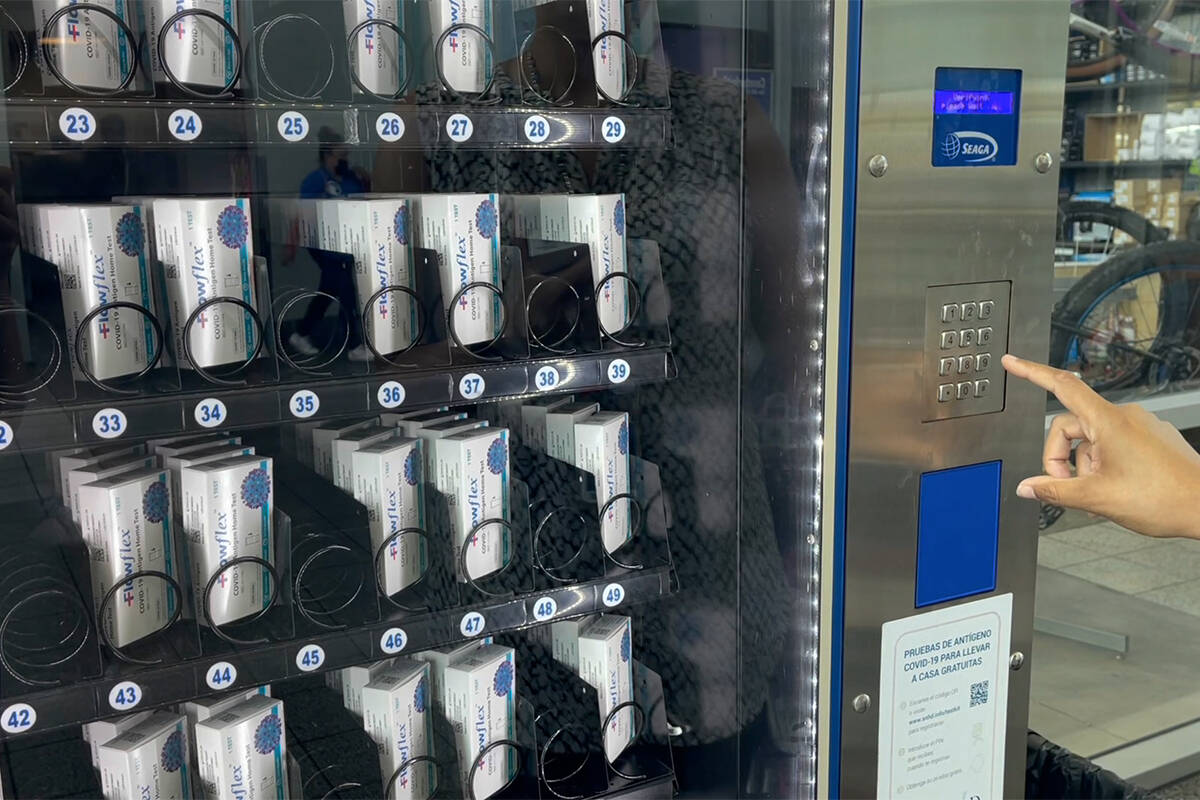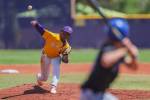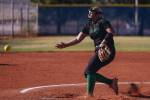New COVID variants fuel fear of a winter surge
COVID-19 cases in Clark County continued to climb this past week, with the detection of new coronavirus variants fueling worry over a winter wave of infections.
Omicron subvariants BQ.1 and BA2.75.2 have been detected in the past 10 days during surveillance of wastewater in Southern Nevada, said an official with the Southern Nevada Health District. Monitoring coronavirus that has passed through the body into the wastewater system provides an early look at disease trends.
“We’re worried about BQ.1 taking off as the driver of this modest wave we’re seeing,” Cassius Lockett, director of disease surveillance and control for the health district, said on Wednesday.
He described the recent increases in confirmed cases in the county as “marginal” but noted, “A marginal increase can turn into a moderate increase if one of these variants were to get a foothold, and potentially even lead to a surge.”
The 14-day average of confirmed daily new cases rose to 112 from 93 last week in Clark County, according to new data from the Nevada Department of Health and Human Services.
Statewide, the average increased to 151 from 129. These case tallies are undercounts because of the increased use of at-home rapid tests, whose positive results go unreported.
The number of confirmed and suspected COVID-19 hospitalizations fell to 99 in Clark County from 111 last week. Statewide, hospitalizations fell to 126 from 138. Increases in hospitalizations typically lag weeks behind increases in new cases.
The 14-day average for daily new deaths, another lagging indicator of disease trends, stood at zero in the county and fell to zero from one statewide.
Troubling variants emerge
Health authorities have expected some increases in COVID-19 this winter, considering the surges the prior two winters of the pandemic. The introduction of these new omicron subvariants could contribute to the wave of cases, some believe.
“They’re competing very, very favorably with the current omicron variants, and I think they could well contribute to this surge,” said Dr. William Schaffner, a professor of infectious disease at Vanderbilt University.
New omicron subvariants BQ.1 and closely related BQ.1.1 appear to spread more easily than other strains. They have quickly grown to account for more than 11 percent of current cases in the U.S., as determined by genetic analysis of a sampling of positive tests, according to the Centers for Disease Control and Prevention.
“Fortunately, the early reports are the bivalent booster does provide noteworthy protection against severe disease caused by these variants,” Schaffner said.
BQ.1 and BQ.1.1 are descended from BA.5, a currently dominant strain specifically targeted by the updated COVID-19 booster, Lockett noted, suggesting the updated booster is a good fit for combating these emerging strains.
Uptake of the bivalent booster remains low, however. About 85,000 doses of the bivalent booster have been given in Clark County since September, said Dr. Cort Lohff, chief medical officer for the health district.
This equates to roughly 6 percent of the more than 1.4 million people in Clark County who have completed the initial vaccine series of two shots of the Pfizer-BioNTech or Moderna vaccine, or a shot of the one-dose Johnson &Johnson vaccine.
Bivalent boosters, authorized by the Food and Drug Administration in late August for those 12 and older, are now available to younger children. Last week, the FDA authorized a Pfizer-BioNTech booster for those ages 5 to 11 and one by Moderna for those as young as 6.
Lohff especially encouraged those 65 and older, with compromised immune systems or underlying medical conditions to get the updated booster because they are at highest risk for complications from COVID-19. He also encouraged younger people who will be around older relatives to consider getting the shots as a way of protecting elder family members.
‘Twindemic’ threat
Officials once again are concerned about the threat of a “twindemic,” a bad flu season on top of a surge in COVID-19 cases. This threat hasn’t materialized in either of the past two winters.
But “this year, the third time may not be the charm,” Schaffner said. Australia and the southern hemisphere of the globe had an early and substantial flu season, he said, which does not bode well for the U.S. and the northern hemisphere.
Although the northern hemisphere won’t necessarily repeat what happened in the southern hemisphere, Schaffner noted that some parts of the U.S. are seeing early flu activity.
He and other health authorities urged everyone to get both flu shots and COVID boosters, which can be given at the same time.
“It could be a winter full of mischief,” Schaffner said.
Contact Mary Hynes at mhynes@reviewjournal.com or 702-383-0336. Follow @MaryHynes1 on Twitter.





























